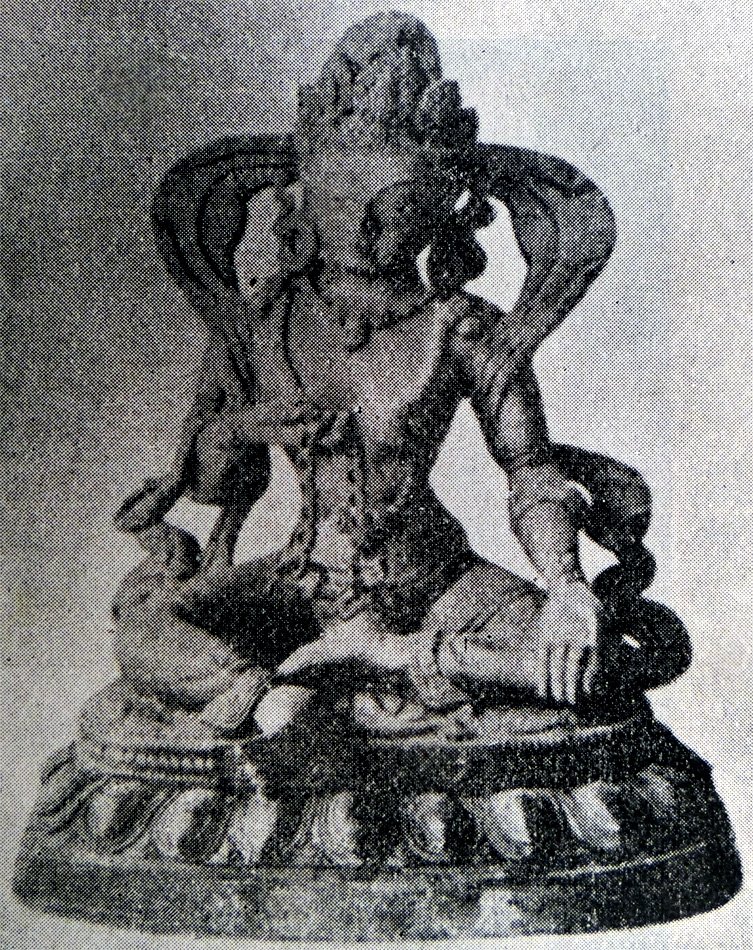The Indian Buddhist Iconography
by Benoytosh Bhattachacharyya | 1958 | 51,392 words | ISBN-10: 8173053138 | ISBN-13: 9788173053139
This page contains an iconography image of Four Pratisamvits: Nirukti-Pratisamvit and represents figure 224 of the book Indian Buddhist Iconography, based on extracts of the Sadhanamala English translation. These plates and illustrations represent either photographs of sculptures or line-drawing reproductions of paintings or other representations of Buddhist artwork.
Figure 224 - Four Pratisaṃvits: Nirukti-Pratisaṃvit

Fig. 224: Nirukti Pratisaṃvit
(Peiping)
In Buddhism Four Pratisaṃvits [viz., : Nirukti-Pratisaṃvit] are acknowledged as the branches of logical analysis, and these are named as Dharma (nature), Artha (analysis), Nirukti (etymological analysis) and Pratibhāna (context). These abstract ideas also received the attention of the Vajrayānists and were duly deified with human form, colour, weapon, and symbols. In a deified form these four Pratisaṃvits are found described in the Dharmadhātuvāgīśvara-maṇḍala of the Niṣpannayogāvalī. These are described below with necessary details in the same order in which they appear in the Maṇḍala.
3. Nirukti-Pratisaṃvit:
Colour: red;
Arms: two;
Symbol: chain.
The third in the series of four goddesses of the Pratisaṃvit group is Nirukti Pratisaṃvit whose form is described in the text as follows: “In the West there is Nirkuti Pratisaṃvit of red colour, holding in her two hands the chain from which a lotus is suspended”. A statuette of this obscure deity is found in the Chinese collection of Peiping. Fig. 224 illustrates this Chinese specimen.
